We’ve covered
decking finish problems in some detail already. But some issues are more common – and cause more grief – than others. This week we’re going to look at the common problem of stickiness, where for some reason the
decking oil you’re applying just isn’t doing what it says on the tin. We’ll also look at how to remove old finishes so you can re-apply lots of lovely oil, and provide sensible advice about what NOT to do!
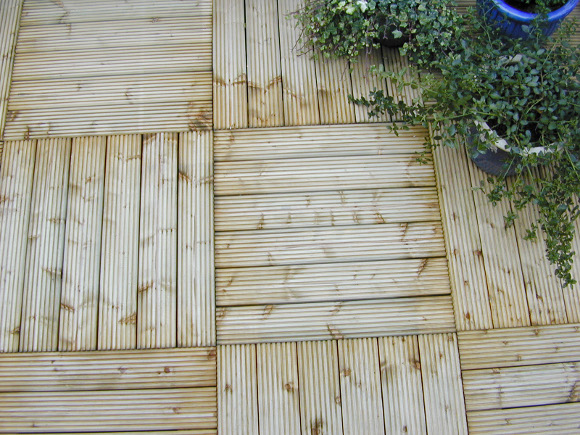
Sticky garden decking – What to do about it
You’re doing the decent thing, keeping your garden deck in apple pie order. But when it comes down to actually applying the decking oil, or re-applying more coats, everything seems to be going pear-shaped. It’s sitting on the surface instead of being absorbed, and you’re getting into a right pickle. So what’s all this horrid stickiness about, and how do you fix it?
4 reasons why decking oil goes sticky
- Over-application – where the oil isn’t penetrating the surface properly
- Issues around using an oil over a non-compatible product like a decking stain, varnish or paint
- Not enough preparation – for example trying to use a decking oil over mould or algae
- Problems with new hardwood decking, which is already naturally oily
What’s the problem?
If the decking oil you’re applying has gone sticky and isn’t being absorbed properly, your number one reason – assuming it’s new decking – might be the type of wood the decking is made of.
If it’s a brand new deck, is it made from hardwood? If so, it might already be naturally oily. Which means there’s probably nothing wrong at all – the wood might be oily enough in the first place or even pre-treated with an oil. Some new hardwoods, especially exotic ones, are naturally very oily indeed, and you might find they absorb very little oil if any at all, at least until they’ve aged a bit and seen at least 3 months of our famously awful British weather!
Over-application is a simple one. If your deck has been happily absorbing plenty of oil then suddenly stops, it’s probably because the timber is already ‘full’ and can’t absorb any more. All you need to do is stop trying to apply more and wipe off any excess with a lint-free cloth.
Some people try to take short-cuts, or don’t fully understand how various decking products work, for example, trying to add an oil over the top of a non-compatible decking stain, a varnish or even a paint. If that’s what you’re thinking about doing, stop right now – it simply won’t work! Decking oils will only work on bare wood or on decking that has been previously oiled. If your garden deck has been treated with a product that forms a protective film on the surface, sometimes characterised by cracking, peeling of flaking, it will have to be fully removed before adding a decking oil.
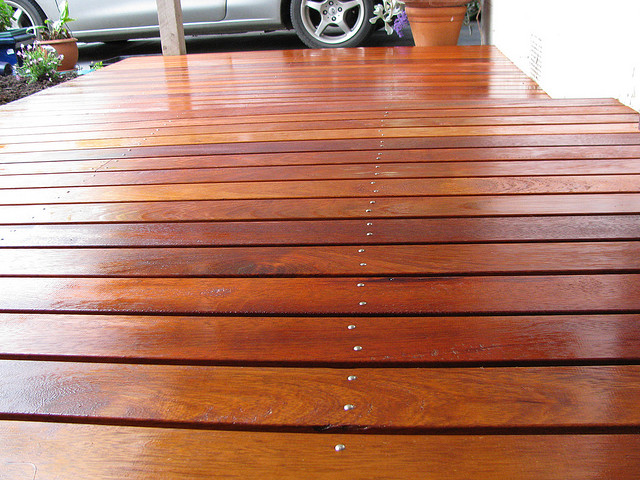
The same goes for mould and algae. It might be tempting to just paint decking oil over the top and hope it disappears, but it won’t work. Mould and algea tend to penetrate into the surface, they don’t just sit on top of the wood. And oiling them won’t kill them off, they’re living things and they will only die when treated with a special wood fungicide and mould killer, such as Barrettine Mould and Mildew Cleaner.
Many of the best anti-fungal products for wood kill the mould or algea and also prevent it coming back, which is an excellent idea and buys you more time in between maintenance sessions.
How to remove decking oil
If you’ve taken things too far and need to remove decking oil, or you want to remove a old decking oil and use a different finishing product like a stain or varnish, how do you do it?
Oils soak into the wood rather than just sitting on the surface, so while it’s easy enough to sand them off at surface level, it’s very difficult to get the product out of the grooves. If your deck is oiled, it’s best to use another oil rather than try to remove it and replace it with a stain or paint. Oils are, after all, the best product for decking because they penetrate the wood and protect it so much better, for longer, than something that just sits on the surface, and they let the lovely natural wood grain show through.
There’s a lot of talk online about getting rid of decking oil and replacing it with stain or paint, but the advice is always the same – it’s a huge challenge and you’re probably best off letting it lie. You could try white spirit or a jet washer but even they are far from ideal. Your best bet is to stick with oils. Here’s why…
- Sanding only works when the deck is smooth, not grooved, and it won’t remove oil from the grooves
- You can use a jet washer to clean decking finished with oil but it comes with risks of its own – you could damage the wood surface or contaminate the soil as the powerful jet of water pushes the finish out of the wood onto plants and into the ground
- If you really want to re-treat your decking with a sealer (even though sealers aren’t the best idea for decking) you might be able to remove your oil-based finish with white spirit… on the other hand you might not, and it’s an awful lot of work
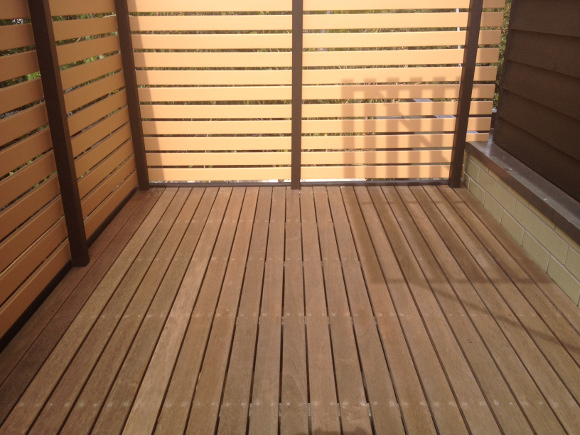
The easy way – Replacing other decking finishes with oil
Rather than try to remove an oil finish and replace it with something that won’t do as good a job – like a stain or varnish – it’s always easier to remove a non-oil finish and replace it with decking oil. A decking stripper, for example, is a great way to get rid of many decking stains and paints so you can replace it with a lovely oil.
Make life easy with a good decking oil
If you want to re-treat a previously oiled decking with a fresh coat of oil – which is what we’d recommend – it’s a much easier job. You won’t even have to remove all the old oil. Just clean the surface thoroughly using a good quality decking cleaner, which will get rid of the dirt, then re-oil it. 2-3 coats should do the trick. If you’re looking for a great quality decking oil, we highly recommend Holzol Decking Oil.
How to maintain a perfect decking oil finish for longer
As a rule, the better you maintain your deck, the less frequently you’ll need to re-oil it.
- You can’t beat a simple brush for a start, keeping the wood surface free of mud, soil, leaves and so on. Regular sweeping makes a huge difference to the life of a deck
- Cleaning is your next job, regularly using a
- to get rid of moss, mould and algae and prevent regrowth for as long as six months
- Re-finish your deck with oil whenever it starts looking tatty or worn, to help prevent damage before it starts to happen
Need help with your decking project?
For more information about decking treatments and their uses, contact our team of resident experts who are always on hand to help with project advice and product recommendations. Alternatively, see our decking treatments FAQ page which covers many of the most commonly asked questions about decking treatments.
We love to see before, during and after photos of any decking, project. If you would like to share your pictures with us and our followers, send us your photos or share on our Facebook, Twitter, Pinterest or Instagram pages.


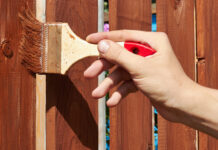
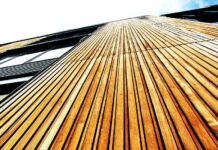
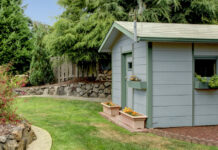
Great article, thank you! Quick question: to re-oil (considering that the deck is already smooth) is it mandatory to lightly sand the deck to open its pores, or is it possible to apply a layer of oil on top straight away (after a quick broom)? In my case, I have sanded the old oil away (finished with 240 grid) and applied 1 layer of oil with reddish colour. I will only be able to apply a 2nd layer in one week after the 1st.
Hi Gonzalo,
There is no need to sand between coats of decking oils. Ensure that the decking is swept, clean and dry.
Hope that helps.
Hi there, thank you for this useful article. I am hoping to get some advice on the situation we have with the merbau deck we installed 3 months ago. The boards that receive shade from the tree has turned black. More recently, one of the merbau boards have started flaking. They are superficial cracks. What do you think has gone wrong and what can we do to rescue our new deck that doesn’t look very new anymore. Thank you for your help.
Hi Evelyn,
I would really like to see some photos of the decking before I recommend a course of action. Please could you contact us and give me as much information as possible ie; weathering period, products used on the decking and mark it for my attention.
Hi
We have a new deck of mahogany prob from Brazil but they oiled it immediately too soon and it’s all splotchy. Should we let it just dry out or do we need to sand it or it will be uneven forever?
Hi Arianne,
Mahogany is an extremely dense hardwood that is naturally oily. I would recommend sanding it back to bare wood and then letting the Mahogany weather in the exterior elements for at least 12 weeks. This will allow the natural oil to dry out after sanding. Give a really good clean over with Methylated Spirit and then I would then recommend 1-2 very thin coats of this decking oil which is suitable for both soft and hardwoods. Please note that using a product with a pigment in it such as the light oak will always protect the timber for longer than a clear product as the pigment also acts as a natural barrier to UV light.
https://www.wood-finishes-direct.com/product/manns-premier-uv-decking-oil
?
I hope this helps, Samuel
Thank you so much for your advise! It’s actually getting better on its own in the summer heat and sun. We will keep watching it.
Hi, I’ve just had my decking replaced & applied a light oak decking oil to it. This has dried very orange so i’m not keen on it, please can you tell me if it is possible to apply a different coloured oil (thinking grey) to change it or will it not be able to absorb it? (I’ve only applied 1 coat)
Thanks,
Fi
Hello Fi,
As you have only applied 1 coat at this stage you do have some options for sure. Grey may not be one of them I am afraid.
With oils two coats is usually sufficient to saturate the decking wood, any more than that and you start to have problems with oil drying on the surface and looking messy, so you only have the option to apply one further coat of product. When you choose which colour you will have to factor in the current colour as this will have an impact on the following coat and colour that will be achieved. And it is definitely better and risk free if you use an alternate colour from the same brand range.
Choosing a product with more of a green or colder base tone will help to reduce the orange some what, although what ever you go for a test area first is recommended to ensure you get a result that you like.
Of course if your decking is smooth side up, then you are able to sand back to remove that first coat of oil and this will open up your options for an alternative colour such as the grey.
I hope that helps some and if you need any further advice or you are able to let m eknow what Decking Oil brand you have used, please do not hesitate to get in touch via our contact us page.
All the Best Samantha.
Hello,
I’ve just moved house.When I arrived in the winter,all the gates,tables and decking were the same colour,with the same problem…I could literally run my thumbnail over the wood and the colour would come off in a slimy mess.Have cleaned this slim off with soapy water and on the decking,with a power washer.Not all the brown slim if off uniformally ,but most of the decking is back to bare wood.
Question is,what do you think that treatment was and why didn’t it take to the decking as well as gates and tables.
And.Help! I now have a mostly bare wood decking,it’s raining and I’ve no idea what to apply to rectify.It needs to be dark brown.
Sadly,I’ve also got a cedar clad timber extension,2015,which the last owners have “stained??” Poo brown! Is there anyway of removing this and letting the cedar silver naturally
What a mess.Help! Thank you. Andrea
Good Morning Andrea,
A common problem when buying a house, we inherit things that we have no idea what they could be. Its a shame we do not leave a little forwarding letter for new home owners with all the little details included such as paint colours and brand, wood finishes and suppliers and so much more. I so often hear of similar situations to yours. Although I have not come a cross a product that matches your description before and in all honesty I have no idea what it could be. It sounds like you managed to get most of it off and I would have to recommend if any is remaining that you try to get this off also.
For the decking, the first thing to do will be to give the surface a good clean with a products such as the Barrettine Super concentrated Decking Cleaner
Once the wood is clean and dry, this will take a few days of warm weather, then you can apply a preserver and top coat of decking oil to protect and refresh the appearance of the decking. I recommend the Barretine Universal Preserver which is a clear preserver that will help to prevent mould and rot.
For the Decking Oil there is a wide range of options to look at, I recommend a coloured oil over clear for better UV protection and a popular choice is the Barrettine Decking Oil.
Test areas are vital as the type, age and condition of your wood will impact on the colour and result achieved, the great thing about decking oils, is they are so versatile and so can be used for you other exterior wood projects if you wanted, as long as the wood is bare.
For the cladding, the first place to start, if the stain is a surface sealer rather than an oil, is with a stripper and there are two good options.
Barrettine Paint Panther Paint and Varnish Remover this is the quicker, messier option, the gel lifts the stain for scraping off.
Barrettine Peelaway 1 and 7 sample pack this is a poultice that you leave on for a period of hours/days and then peelaway to remove all the stain. Its worth having a read up of both products to see if they might suit you project and it is important to try test areas first. If they are not suitable then I am afraid sanding is the next option.
If the Cedar is treated with an oil , then sanding is the only option and will mean that you need to allow the cedar to weather before you can further apply any other product.
I am here to help if you have any questions just get in touch via contact us page.
Kind regards Samantha.
Hi, I accidentally used an oil penetrating wood finish for an indoor project (I know I know…). Is my project ruined or is it safe to have indoors once it’s dry?
Hello Jason,
Can you email me via our contact us page, with details of the wood type and the oil you have used? And what the project is and I will be happy to help further.
All the Best Samantha.
So glad I found this site lots of great advice
My decking is just over a year old now and I have put Cuprinol decking oil on the wood, several coats and it looked great.I gave it one final coat around end of September to help protect through the UK winter
However in many areas this has now gone a short of off white colour as opposed to the natural decking oil I used. Have you any idea what may have caused this and how to resolve.
Thanks
Thank you for getting in touch with your question Stewart,
It could be because there is too much oil on the decking. As a guide, most oils will be a two coat recommendation and generally speaking less is more with oils. Wood soaks up oil a bit like a sponge and once saturated, does not benefit from having more oil applied. This excess oil sits on the surface of the wood and offers little protection overall, it can allow moisture in and this could the milky appearance you can see, trapped moisture.
At this stage I would probably recommend patience, the excess oil will probably disperse over the winter and any remaining in the spring and the milky patches will also disperse over time, usually with some warm weather or direct sunlight.
If there is anything else that I am able to help with please do get in touch via our contact us page.
Kind Regards Samantha.
Hi, I oiled my decking last week, it’s dried really well and looks fab. Problem is, it’s really creaking when you walk on it. Not just in one or two places, it seems it’s all over ??? Any ideas please? Many thanks. Polly
Good Afternoon Polly,
I would say this is unlikely to be as a result of oiling the wood, although if you can confirm if this started before or after the application. The weather is changing from the warm hot summer that we have just had to colder evenings, damp morning and temperatures are dropping over night, this can impact on exterior wood and it will shift and adjust according to the environment it is in. The wood will differ slightly in the autumn/winter compared to the Spring/ Summer months. Moisture content, UV, temperature, humidity, and all the other element will impact the wood year round.
I would think this is the most likely reason your wood is a little creaky. Its also worth checking the fixing to see if they are all sound and okay for the coming months. Regular sweeping and checking during the winter and acting on any issues that arise, as soon as possible will improve the performance of any finish applied and help it to lats longer.
kind regards Samantha.
Hello,
I have a concern about a deck stain I just applied. I have a an older cedar deck that we sanded well with a large floor sander. We applied a penetrating oil last night. There was no rain yet when I woke up this morning the deck had large white, milky almost soap/ Sudsy like patches. There was dew on the grass. Is the deck ruined? Will I have to re sand and re-stain?Should I try to wipe off the white patches?
Hi Patrick,
This could be down to moisture forming on the decking whilst the oil was drying or possibly where some of the woods natural oils have risen to the surface after sanding. This should rectify itself over the next 3 or 4 days and especially so with the weather forecast being hot and dry. If the situation hasn’t improved by the weekend, please send us some photos via our contact us page and we’ll have a look to see if we can further diagnose the problem.
Hi
My merbau decks looked lovely when first oiled. After two or three coats it is tacky in some areas, those areas don’t get as much sunlight even though it is quite hot.
Do you think too much oil has been applied over the time? If so how long does it take to absorb? Should I just leave it and wait? Only reapply the timber that is in direct sunlight and is not tacky?
Questions, questions . . . . . sorry
Good Morning Belinda,
Yes it does sound like you have applied slightly too much oil. Wood will only absorb so much oil before becoming saturated, once it reaches that point, any further oil will remain on the surface of the wood and take much longer to dry. It will dry eventually, however that surface oil may mark easily or flake off at a later date.
You will find that the Merbau wood, it a hardwood and will require much less oil to be applied and may even benefit from the application of an alternate thinner oil such as the Osmo Decking Oil
For further information please feel free to get in touch via our contact us page.
Kind regards Samantha.